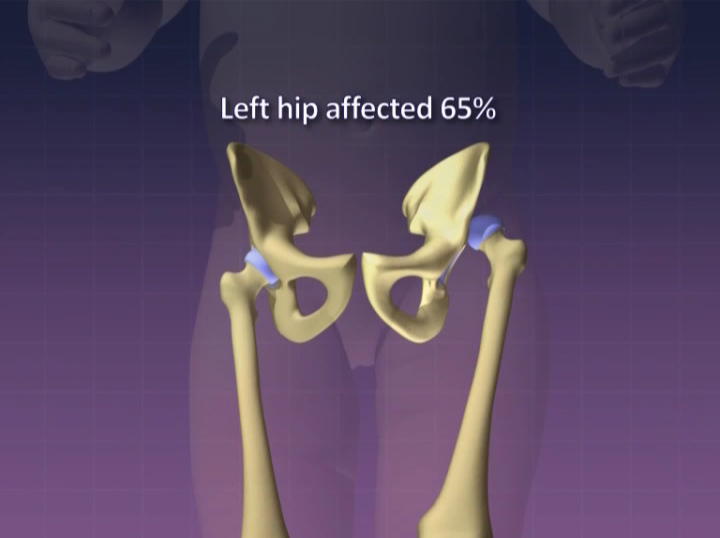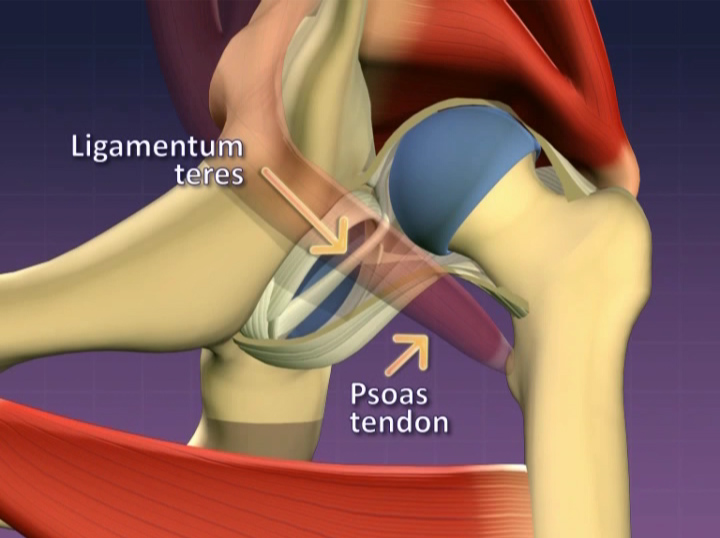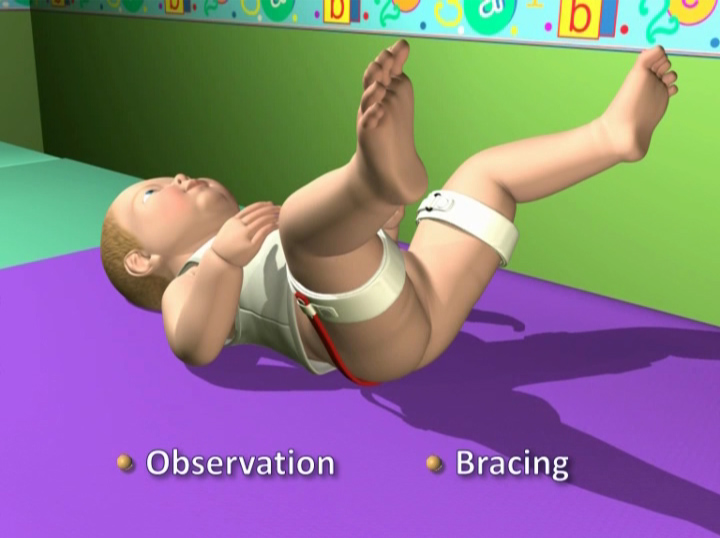What is it?
Developmental dysplasia of the hip (DDH) is a condition that affects the hip joint in babies and young children. The hip is a ball-and-socket type joint, formed by the round ‘head of femur’ and a cup-shaped socket (acetabulum). The normal infant hip is not mature at birth but develops into a strong and stable joint as the child grows. In DDH the hip does not develop normally.
DDH can vary from mild to severe. The socket may be shallow, and the structures that support the hip may be lax. This can allow the head of femur to be unstable. In severe cases, the head of femur may lose contact with the socket. This is known as a dislocated hip, and is occurs in around 1-3 of 1000 infants.
Signs of a dislocated hip may include an audible “clunk” when your baby’s hip is moved, asymmetry of hip position and hip movement, uneven skin creases and an appearance of one leg being shorter than the other.

Who gets it?
DDH is more likely to occur in girls, if the baby was breech during pregnancy, if there is a family history of DDH, in a first pregnancy and in twins. Swaddling or wrapping a baby’s hips too tightly can restrict leg movements and can also lead to DDH.
What is the natural history of a DDH?
DDH is not painful in babies or young children, but is important to detect it as early as possible, so that any long-term consequences such as pain, walking difficulties or arthritis can be avoided.
What conditions are associated with DDH?
DDH can sometimes be associated with other conditions including; plagiocephaly (flattening of the head), torticollis (tightness of neck muscles) and foot deformities.

What is the treatment?
DDH is treated with a brace. The role of the brace is to position the hip joint in the optimal position to promote normal growth and development of the affected hip/s. It is normal for the brace to be worn at all times of the day and night initially. Your baby will require close monitoring. This is to ensure the brace treatment is working effectively and your baby’s hip is sitting well within the joint.
As the hip starts to develop and is positioned in a stable position, the time in the brace may be reduced to allow for bathing of your baby.
An ultrasound is the best type of investigation to monitor your baby’s hip initially. This is because a baby’s hip is predominantly cartilage. As your child grows and develops an Xray will be used to monitor changes to your child’s hip, this is usually from about 6 months of age.
Brace treatment usually ceases when your child has a normal hip US/Xray and a normal clinical examination. This may take approximately three months, but will vary depending on how your child’s hip/s responds to brace treatment. Your child will require ongoing monitoring of their hips to ensure they continue to develop normally into the future. This will usually occur when your child is 1, 2, 4 and 10 years old and will involve an Xray and clinical examination of your child’s hips.

Surgical Treatment
Sometimes, despite good brace treatment, the hip does not go back into joint and surgical treatment is required to correct this problem. If this was to be the case a detailed discussion would be had with you about how the surgery is done and what it means for the development of your babies hip.
